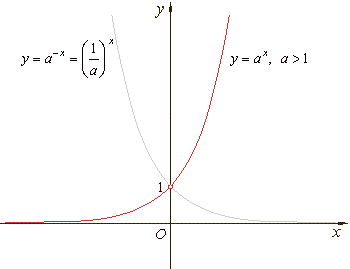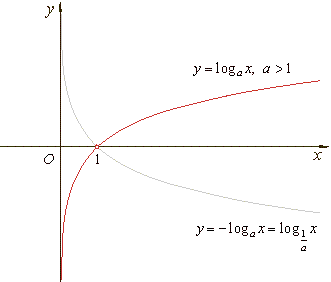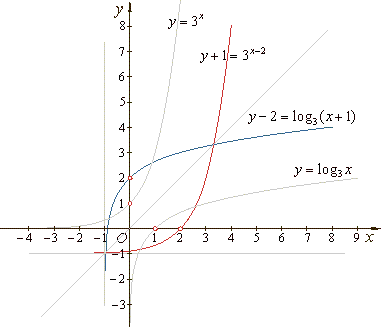|
|
|
|
ALGEBRA
|
|
|
|
Exponential and
logarithmic functions and equations
|
|
::
Exponential
and logarithmic functions (are mutually)
inverse functions
|
|
The inverse function, usually written
f -1, is the function whose
domain and the range are respectively the range and domain of a given function
f,
that is
|
|
f
-1(x)
= y if and only if
f
(y)
= x.
|
|
Thus, the
composition of the inverse function and the given function returns
x, which is called the
identity function, i.e.,
|
|
f
-1(ƒ(x))
= x and
f
(f
-1(x))
= x.
|
|
The inverse of a function undoes the procedure
(or function) of the given function.
|
|
Therefore,
to obtain the inverse of a function y = f
(x), exchange the variables
x
and y
writing x = f
(y)
and solve for y.
That is, form the composition f
(f
-1(x))
= x and solve
for f -1.
|
|
|
| Example:
Given
y = f
(x)
= log2 x determine
f -1(x).
|
| Recall, a logarithm is the exponent (the power) to which a base must be
raised to yield a given number
|
| that is,
y =
loga
x
if x = a
y.
|
|
Solution:
Rewrite y = f
(x)
= log2 x
to x =
log2 y
and solve for y,
which gives y =
f
-1(x)
= 2x.
|
|
or, form f
(f
-1(x))
= x that
is, log2
(f -1(x))
= x and
solve for f -1, which
gives y =
f -1(x)
= 2x.
|
|
|
|
Graphs of inverse functions
|
| The
graphs of a pair of inverse functions are symmetrical
with respect to the line
y
= x. |
 |
|
| Exponential functions |
|
f
(x) = y
= ex
<=>
x =
ln y,
e =
2.718281828...,
where
e is the
base of the natural logarithm. |
|
The exponential
function is inverse
of the natural logarithm
function, so that e
ln
x = x. |
|
|
f
(x) = y =
ax
<=>
x = loga
y,
where a > 0 and
a is not
1. |
|
The exponential
function with base a
is
inverse of the logarithmic
function, so that |
 |
|
|
|
| The
graph of the exponential
function y
= ax = ebx,
where
a
> 0
and b
= ln a |
 |
|
| The
graph of the logarithmic
function y
= logax,
a
> 0
and for a
= e,
y
= logex = ln x |
 |
| The
logarithmic
function is
inverse of the f
(x) =
ax
since its
domain and the range are respectively the range and domain of
the
exponential function,
so that |
 |
| The
domain of f
(x)
= loga
x is the set of all positive
real numbers. |
| The
range of f
(x)
= loga
x is the set of all
real numbers. |
| If
a > 1 then
f
is an increasing function and if
0
< a < 1 then
f
is a decreasing function. |
| The
graph of the
logarithmic function passes through the point (1,
0). The y-axis
is the vertical asymptote to the graph, as shows the above
picture. |
|
|
| Translated logarithmic
and exponential functions |
| Note
that y -
y0
= loga (x
-
x0)
represents translated
logarithmic function to base a |
|
and
y -
y0 =
a
(x
-
x0)
represents translated
exponential function with base a |
| where, x0
and y0 are the coordinates of translations of the graph in the
direction of the coordinate axes. |
|
|
| Example:
Given
translated logarithmic function y -
2 = log3 (x + 1),
find
its inverse and draw their
graphs.
|
|
Solution: Exchange variables
and solve for y,
that is x -
2 = log3 (y + 1) which gives y
+ 1 = 3x
-
2.
|

|
|
|
|
|
|
|
|
|
|
|
|
|
|
|
|
|
|
|
|
|
|
|
|
|
|
|
|
|
Contents A
|
|
|
|
|

|
|
|
|
|
|
Copyright
© 2004 - 2020, Nabla Ltd. All rights reserved.
|
|
|